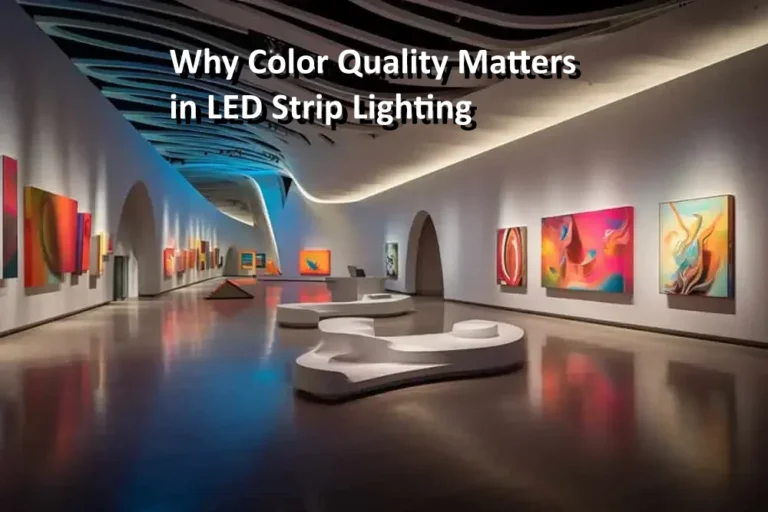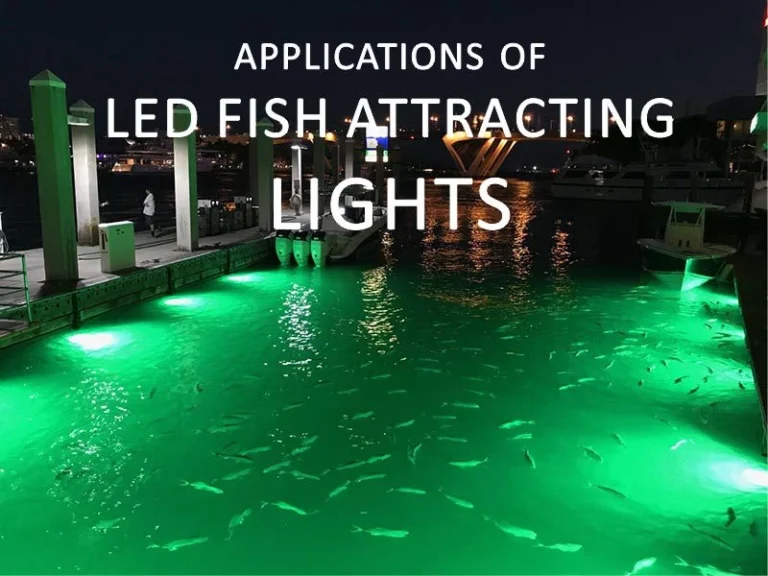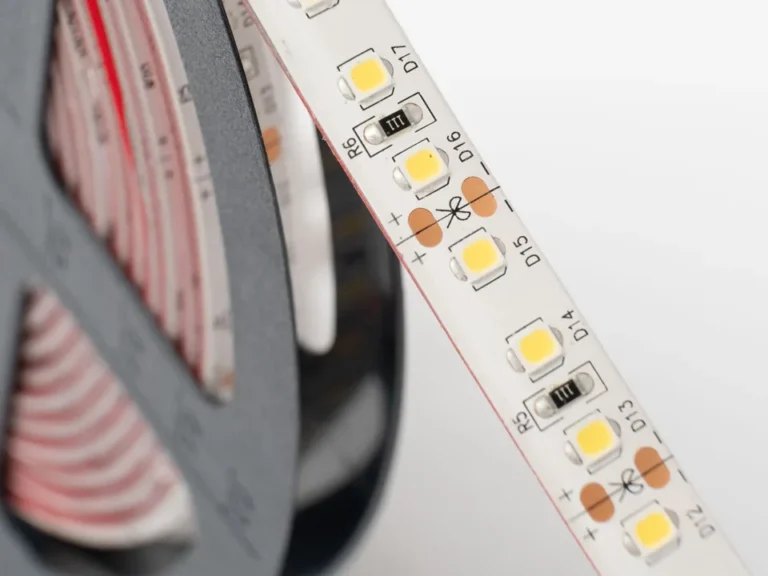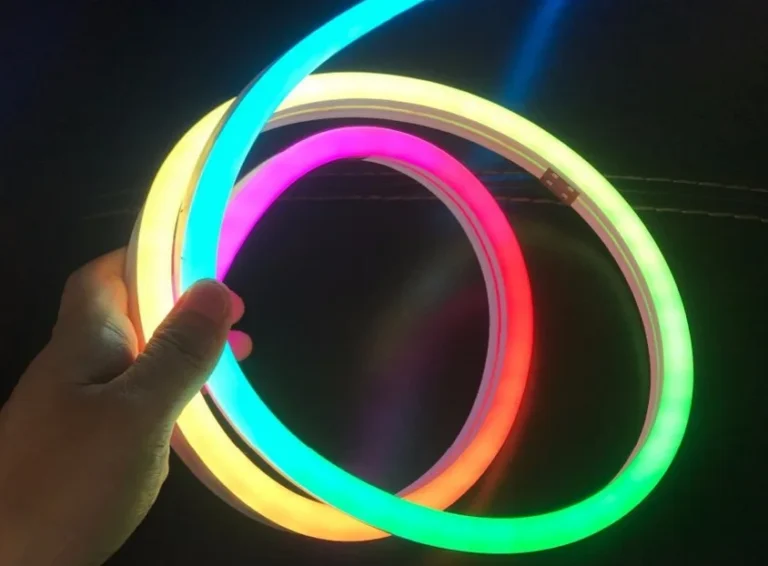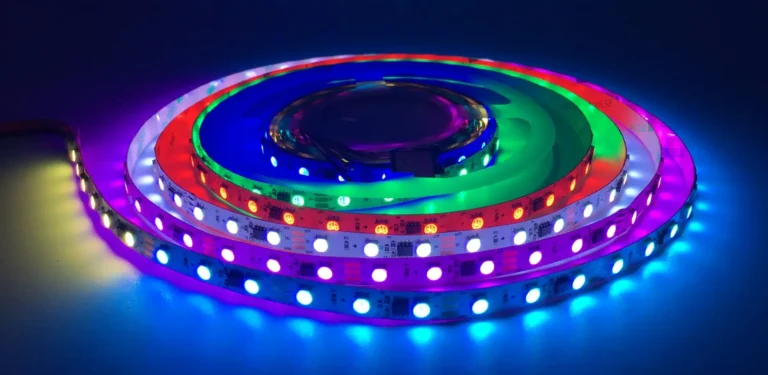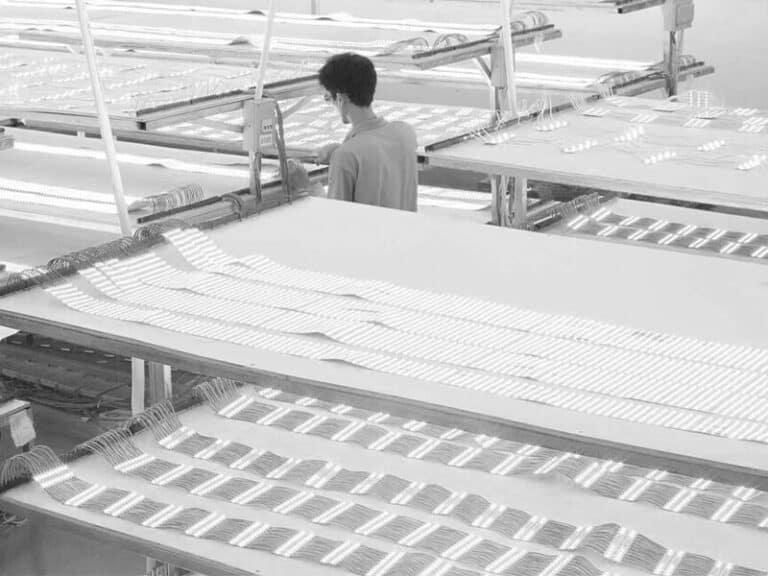Have you ever seen fishermen using fish attracting lights on their boats? These magical bulbs aren’t for lighting—they’re for attracting fish! Fish attracting lights take advantage of fish’s phototaxis, making it easier for fishermen to catch them. Fish attracting lights not only make fishing more efficient but also protect the environment and fishermen’s health, truly a perfect blend of technology and tradition.
LED fish attracting lights, as a unique lighting device, have been widely adopted in the fishing industry. As a crucial component of LED fish attracting lights, the quality and performance of the lights directly impact the overall effectiveness and lifespan of the lighting system. This article will explore the working principles of LED fish attracting light power supplies, key considerations for selection, and maintenance and care aspects.
What are the types of fish-attracting lights?
By simulating the bioluminescence characteristics of plankton using specific spectra (such as blue and red light combinations), these lights attract phototactic fish to gather. Modern fish-attracting lights widely adopt LED technology, featuring an IP68 waterproof rating, intelligent temperature control, and multi-spectrum adjustment functions, with power ranging from 15W portable models to 3000W offshore models.
I. Classification by spectral characteristics
Blue light (450-495 nm): Offers the strongest penetration, is suitable for deep-water operations (50 meters or deeper), and is highly effective for mid-to-upper layer fish such as sardines and mackerel. Luminous efficacy can reach 100-110 LM/W, making it the mainstream option in the market.
Yellow light (570-590 nm): A dedicated attraction wavelength for squid, performing exceptionally well in turbid waters. Combined with a 360° light emission angle, it can cover a larger area.
Green light (495-570 nm): Matches the fluorescent characteristics of plankton, attracting fish through the food chain effect.
Red light (620-750 nm): Used for shallow-water fish attraction, but has high water absorption and limited penetration depth.
RGB combination light: Integrates red, blue, and green chips to simulate moonlight or bioluminescence (e.g., krill), enhancing attraction to higher-order fish. For example, the blue-green combination spectrum improves soft-bodied fish aggregation efficiency by 40%.
Pulse strobe mode: Supports 200 Hz high-frequency flashing to enhance visual stimulation intensity.
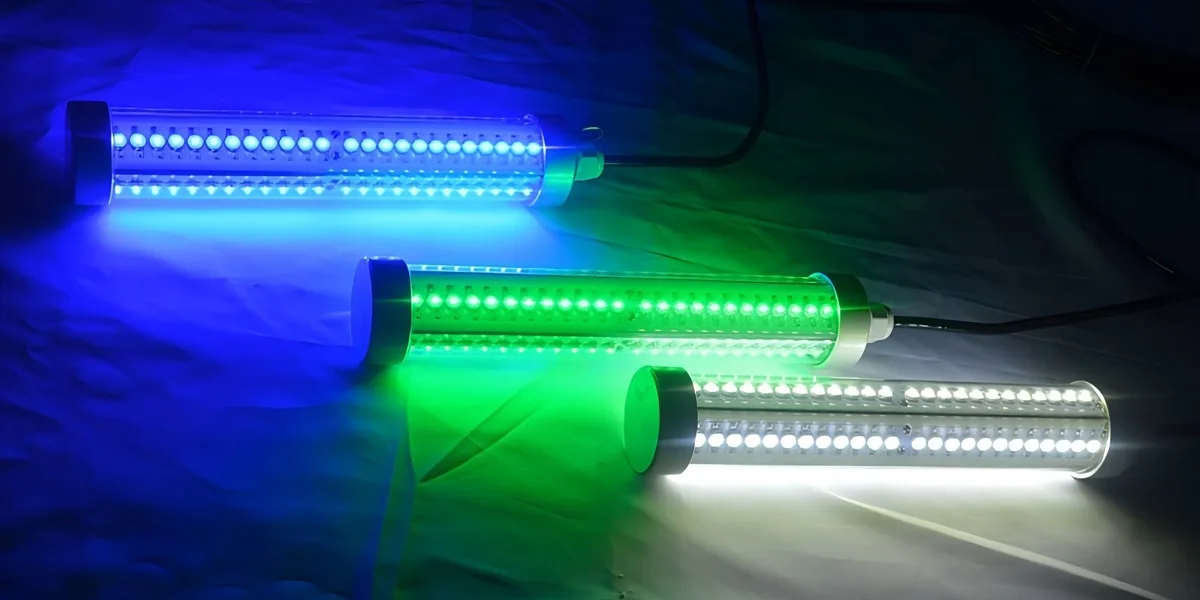
II. Classification by installation scenario
Surface fish aggregation lights: Installed on ship sides or masts to illuminate the water surface and create a light zone. Wide-angle lenses, with a beam angle of 120°, are necessary to enhance the coverage, and they emit light that surpasses 5,000 lumens. The drawback is that the light is affected by sea surface reflection, resulting in weaker penetration in deep water compared to underwater lights.
Underwater fish aggregation lights: IP68 protection rating, capable of withstanding pressure at 50 meters water depth (approximately 5 ATM). The aluminum housing combined with a nylon heat dissipation structure resists salt corrosion. Typically employs a dual-mode heat dissipation system with copper fins and a seawater circulation channel to maintain an operating temperature ≤85°C, with annual light decay <3%.
Fish aggregation lights are typically suspended around fishing vessels for large-scale deployment, can be fixed to deck or dock surfaces for high stability, or quickly installed using clamps for enhanced flexibility.
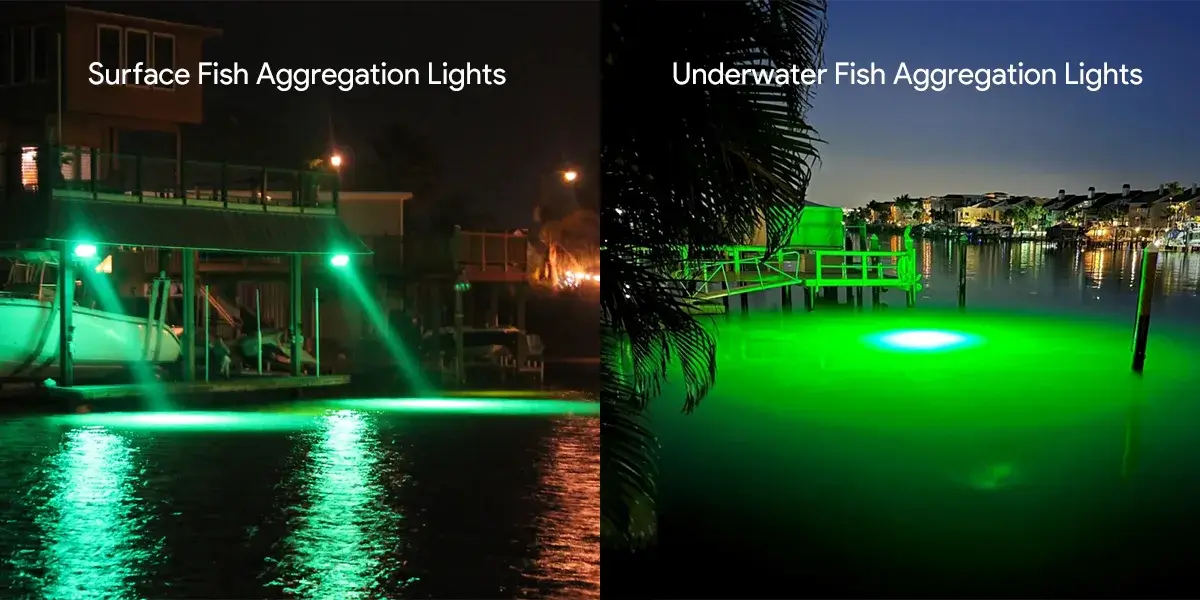
III. Classification by technical structure
| Type | Representative Product | Core Technology | Application Scenario |
| COB Integrated | Multi-chip lens module | Three-color LED integrated substrate, aspherical lens focusing | Offshore purse seine fishing boats |
| Torpedo-Type | Deep-water pressure-resistant lights (e.g., 1000W model) | Aluminum phase-change heat sink, 360° omnidirectional lighting | Deep-sea fishing, soft-bodied fish harvesting |
| Smart Dimming Type | PWM control system | Constant current drive + stepless dimming, supports moonlight gradient program | Ecological simulation for fish attraction |
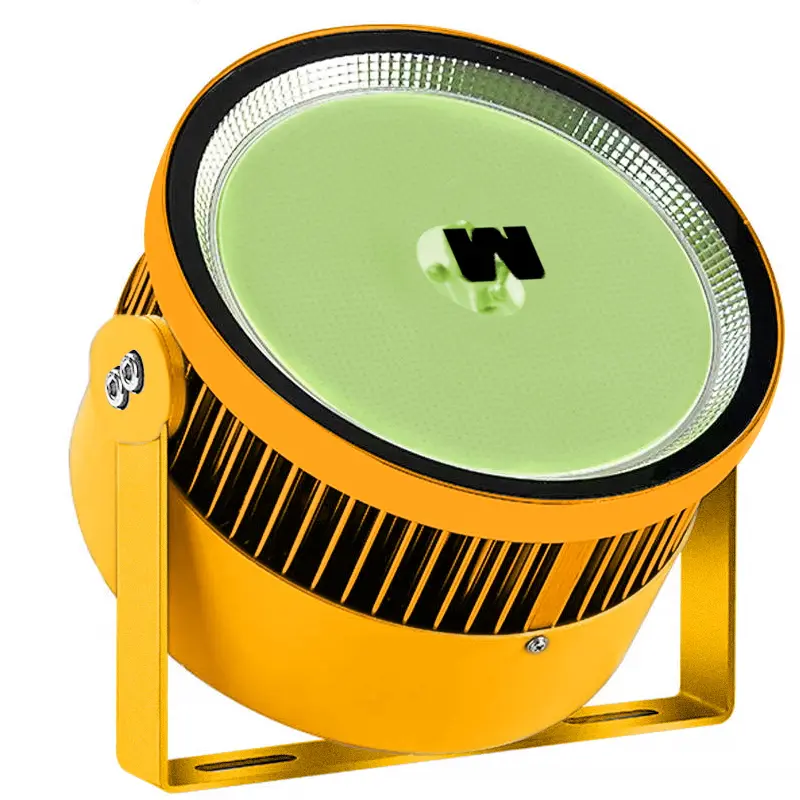
High Power COB Fish Attracting Light
Model No.: Round Type
Input Voltage: AC100–320V
Surge: 10000V
Watt: 800W/1000W/1200W
LED Type: COB
Size: Φ230 × 140mm/ Φ210 × 140mm
Color: 3000K/4000K/5000K/6000K/Red/Green/Blue/Purple
CRI: >80@3000K/4000K/5000K/6000K
Lumen: >120lm/w@3000K/4000K/5000K/6000K
Body Material/Color: Aluminum / Golden Color
Lamp Chlmney Materia/Color: Tempered Glass / Ultra-clear Glass (Light Transmittance 95%)
IP Grade: IP67
Light Output Ratio(LOR): 97%
Power Factor: 0.99
Electromagnetic Compatibility: EMS + EMI
How Fish Attracting Lights Work
The core technology of fish-attracting lights is to use the physical properties of light to attract fish. At night, it emits light rich in the blue spectrum through high-intensity LED lights. This type of light can penetrate seawater to the greatest extent, directly illuminating fish in the deep sea. In dark waters, light serves as an important reference point for fish. Fish in the water are stimulated by the light and gather near the light source, making it easier for fishermen to catch them.
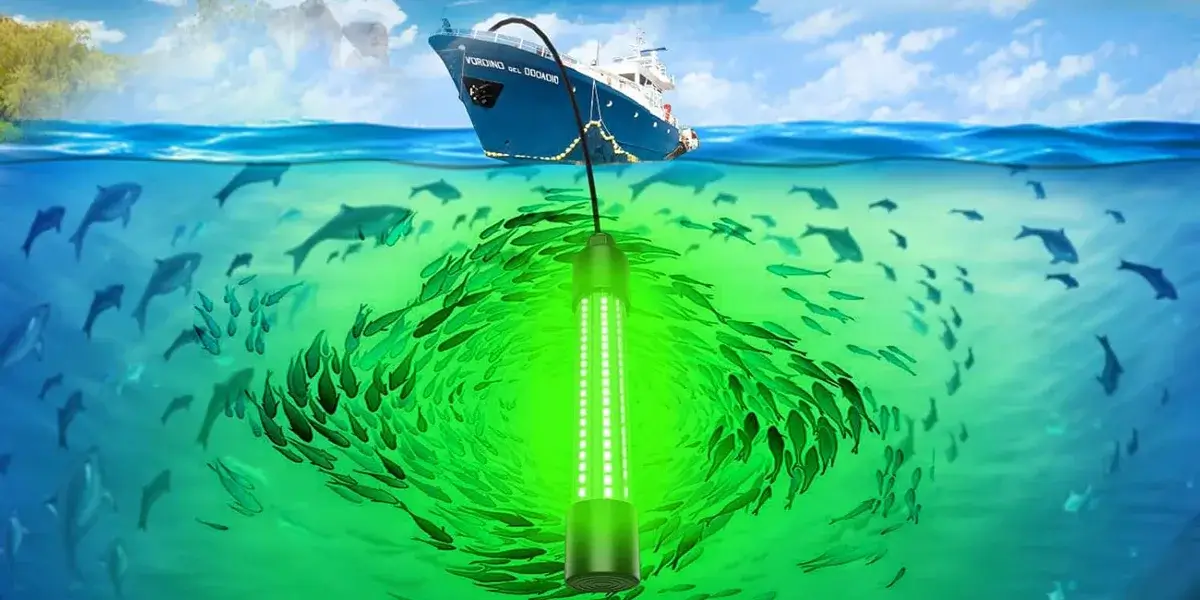
Utilizing the phototaxis effect, the retinas of mid-to-upper layer fish (such as sardines and mackerel) are sensitive to specific wavelength bands. Blue-green light stimulates their cone cells, triggering phototaxis-driven clustering behavior; additionally, by exploiting the food chain cascade effect, LED lights emit ultraviolet light (365-420 nm) and blue light to attract plankton, which in turn attract small fish to follow the plankton into the illuminated area, thereby drawing larger predatory fish to follow the small fish schools.
Therefore, blue or green light sources are commonly used in fish-attracting lights because these colors travel farther in water and have a stronger attraction to fish. Thus, using blue or green light sources can more effectively attract fish and improve fishing efficiency.
Target fish species such as squid and mackerel are sensitive to specific wavelength ranges of light (e.g., squid are most easily attracted by blue light in the 450-490 nm range). They mistakenly identify areas of intense light as safe environments or food sources and actively approach the light source.
Additionally, some fish-attracting lights emit certain sound waves that can propagate through water, alerting fish and making them more easily attracted by the light.
How to choose the right fish-attracting light?
Fish-attracting lights come in various colors, including blue, green, and yellow light, among others. Selecting the appropriate fish-attracting light requires considering the phototaxis characteristics of target fish species, operational water depth, and environmental factors. The following is a scientific selection guide:
Deep-sea operations >40 meters: Blue/green light with a wavelength of 450-560 nm, offering strong penetration capabilities, suitable for deep-sea operations exceeding 40 meters in depth, attracting mid-to-lower layer fish species; 300W green LED underwater illumination can reach a maximum depth of 85 meters. Target fish species such as squid and mackerel are sensitive to specific wavelength ranges of light (e.g., squid are most easily attracted by blue light in the 450-490 nm range), mistakenly identifying areas of intense light as safe environments or food sources and actively approaching the light source.
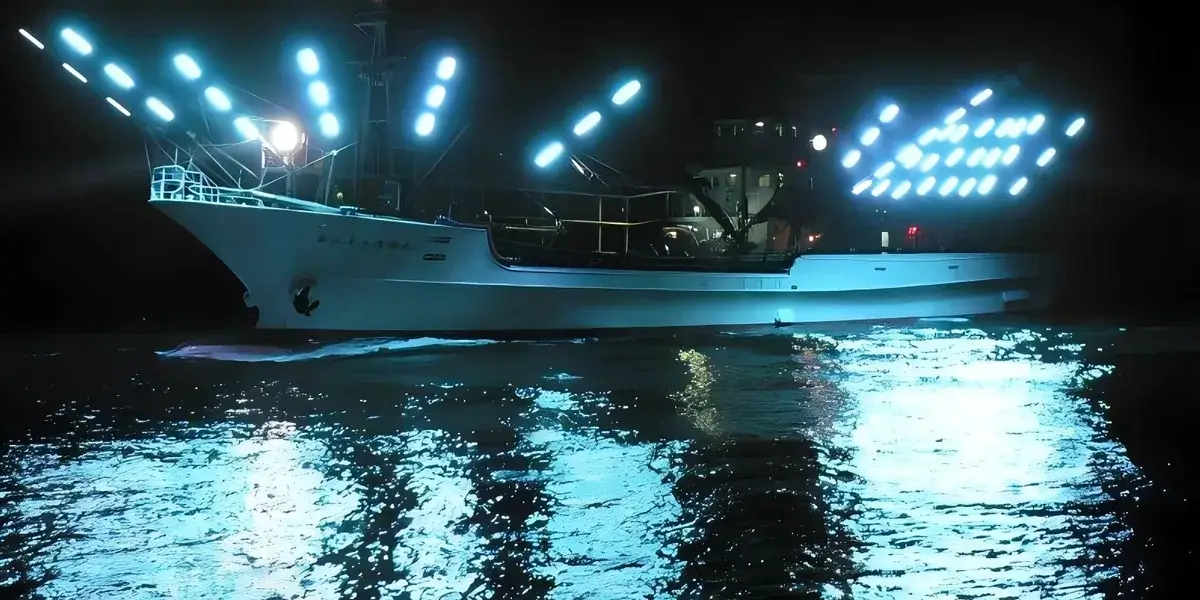
Shallow-water operations (<40 meters): Red light with a wavelength of 620-750 nm has a longer irradiation distance in shallow-water areas (<40 meters) and is commonly used for mackerel fishing and the final stages of net enclosure operations; Yellow light (2700K-3000K): With a long irradiation distance, it is suitable for shallow sea areas such as the South China Sea and Southeast Asia and is often used in combination with green light (at a ratio of 20%-50%).
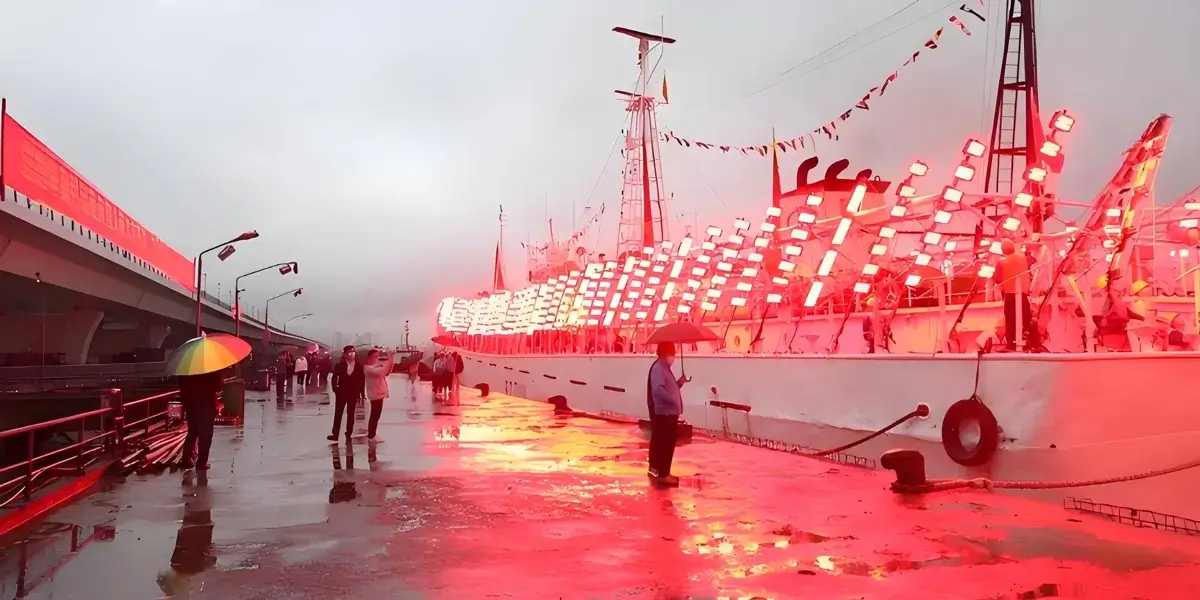
White light (4200K and above): Highly versatile, it is commonly used in deep-sea operations in combination with high color temperature (5000K-6500K) and green light to enhance effectiveness.

Fish Species and Optimal Light Color Selection List
| Fish Species | Optimal Color | Core Mechanism of Action |
| Squid | Deep Blue Light (450-490nm) | Peak phototaxis wavelength band, mistakenly perceived as a safe environment |
| Sardine | Red light | Stimulates schooling behavior, improving net efficiency |
| Phototactic surface fish | Yellow light | Warm tones attract schools of whitebait, etc. |
| Bottom-dwelling fish | Avoid white light | Strong penetrating light may cause fish schools to scatter |
Notes: Carp and crucian carp have strong tolerance to blue light. Although ultraviolet light enhances float signals, it is harmful to the eyes, and the technology is not yet mature, so it is not recommended at this time. White light is only suitable for auxiliary lighting; direct illumination may disperse bottom-dwelling fish. Ultraviolet light has significant radiation hazards, and light decay control is challenging, so it has not yet been commercialized.
Deep-sea fishing vessels are recommended to use a combination of blue light and high-color-temperature white light for lighting to expand the coverage of the phototactic zone. Shallow-water operations should use a yellow-green light combination to balance penetration power and fish aggregation efficiency. LED light sources should be prioritized: they consume only one-third of the power of metal halide lamps and pose no UV radiation risks.
Fish-Attracting Light Intensity Parameter Reference Table
| Light Color | Application Scenario | Underwater Illuminance Threshold | Technical Maturity |
| Blue Light | Deep-sea squid fishing | ≥0.1LX | Mature |
| Green Light | Offshore comprehensive fish attraction | 0.01LX·85m | Mature |
| Red Light | Autumn mackerel net fishing | — | Mature |
| Yellow Light | Shallow Sea <40m | Optimal Penetration Distance | Limited |
Summary: Deep blue, shallow yellow, and red for fish attraction, with white light as an auxiliary to avoid ultraviolet light. Based on the above parameters, a single vessel equipped with 200 high-power blue LED lights can cover an efficient operational zone of 0.5 nautical miles.
Want to learn more about how to choose LED fish attractor lights? Read the blog Fishing Boat Fish Attract Spotlights Buying Guide 2025.
Price Range of LED Fish Attracting Lights
According to the latest market data, there is a significant price difference among LED fish-attracting lights, primarily influenced by factors such as power, spectral type, waterproof rating, and functional design. The specific price ranges are as follows:
● Low-power basic mini fish-attracting lights (≤100W)
Power: 1–10W (e.g., 12V yellow/blue underwater lights); Price: $0.4–$4.3 per unit, e.g., sea fishing fish-attracting light ($0.37), waterproof net marker light ($1), 12V single-color underwater light ($3.1–4); Features: IP68 waterproof, suitable for raft fishing, aquarium lighting, and other shallow-water scenarios.
● Multi-functional dimmable type
Power: 50–100W (supports switching between white light/yellow light/green light/blue light); Price: $4.3–$12.1 per unit, e.g., 12V four-color adjustable fish-attracting light ($4.3), 120W high-power night fishing light ($12.1).
● Mid-to-high power professional type (300–1200 W), fishing boat work lights (white light/blue light)
Power: 300–500W; Price: $62–$121 per unit, e.g., 500W blue light fish-attracting lamp ($62), square 300W waterproof marine lamp ($121); Features: Aerial illumination, light intensity ≥5000 lumens, used for surface fish attraction.
● Deep-water high-efficiency lights (green light/blue light)
Power: 600–1200W; Price: $93–$1086 per unit, e.g., 600W dimmable deep-water light ($685), 1200W green underwater light ($1086); Features: Water-resistant up to 50 meters (IP68), copper fins + seawater circulation cooling, annual light decay <3%.
● High-end intelligent spectrum programmable light
Power: 500–1000W; Price: $538–$1580 per set, e.g., 220V programmable blue light fish-attracting lamp ($538), RGB combination smart lamp ($1,580); Features: Supports moonlight gradient and pulse strobe (200 Hz), with a 40% increase in squid aggregation efficiency.
● Custom Industrial-Grade
Power: Over 1000W; Price: $871–$1085 per unit, e.g., 1200W white light fish-attracting lamp for offshore vessels ($871), 1000W deep-water green light lamp ($1085).
Key Factors Affecting Price Differences
| Parameters | Low Price Range | High Price Range | Typical Examples |
| Power | 10–100W | 500–1200W | $22 vs $1085 |
| Spectral Technology | Monochrome Fixed | RGB Programmable | $28 vs $226 |
| Waterproof Rating | IP65 | IP68 (50 meters deep) | $30 vs $1085 |
| Heat Dissipation Design | Basic Aluminum Housing | Copper Fins + Water Cooling | $84.55 vs $871 |
Industry Trend: By 2025, the average price of LED fishing lights will drop to $399 per unit (a 12.7% decrease from 2013), but high-power intelligent models will still command premium prices.
What is the typical lifespan of an LED fish-attracting light?
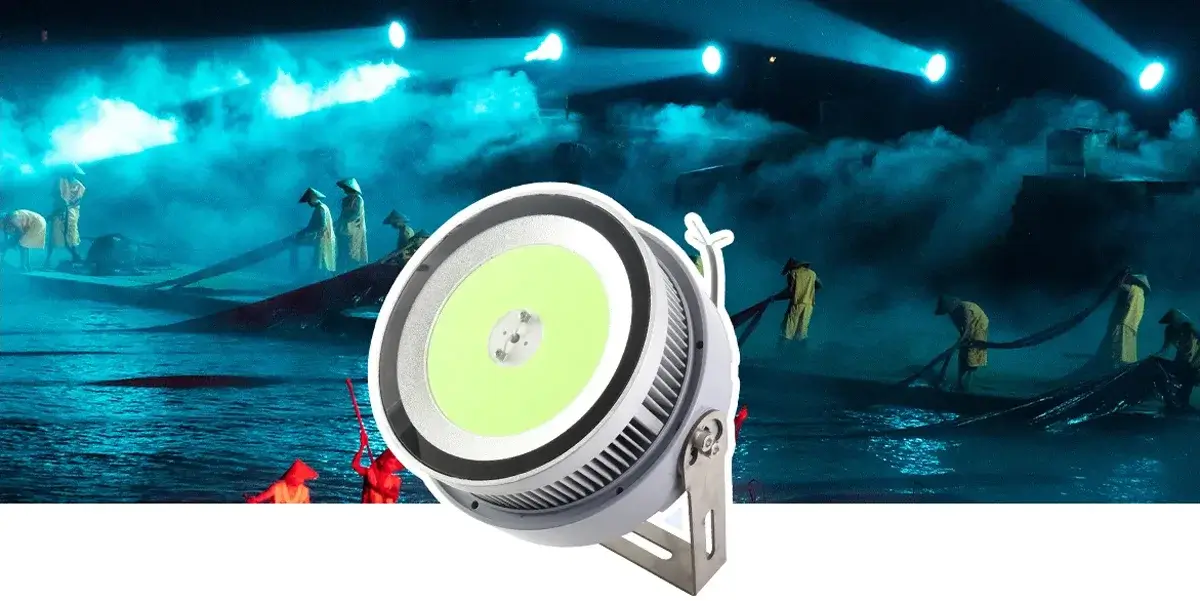
The lifespan of an LED fish-attracting light is significantly influenced by technical specifications, usage environment, and maintenance conditions. The theoretical lifespan of mainstream products and their actual performance are compared as follows: Most professional-grade LED fish-attracting lights are rated for a lifespan of 50,000 hours (e.g., a 1200W green-light underwater light). The 50,000 hours mentioned here refers to the point where the light output has decayed to 70% of its initial value (L70 standard), at which point the light can still function, but its fish-attracting efficiency decreases.
Factors affecting the lifespan of fish-attracting lights:
- Inadequate heat dissipation design: Poorly designed lights with inadequate heat dissipation may experience doubled light decay rates, leading to faster LED decay and a shorter lifespan; Deep-water lights (IP68) using copper fins and seawater circulation cooling maintain sufficient heat dissipation, keeping annual light decay below 3%, with a lifespan closer to the theoretical 50,000-hour value.
- Poor voltage/current stability: Overvoltage operation or unstable current can severely damage the LED chips, causing the lifespan to plummet to 1,000 hours.
- Environmental corrosion: Products exposed to high-salt, high-temperature marine environments for extended periods experience a 30%-50% reduction in lifespan.
- Driver failure: Accounts for 80% of lighting fixture failures; low-quality power supplies have a lifespan of only 20,000 hours;
- Mechanical damage: Wave impact or installation collisions can damage the sealed structure;
- Spectral overload: Operating at excessive power to enhance fish attraction accelerates chip aging.
Key measures to extend lifespan:
- Prioritize deep-water models with IP68 protection and copper substrate heat dissipation design;
- Avoid frequent on/off cycles (≤5 times per day) to reduce driver circuit wear;
- Clean salt deposits from the lamp surface quarterly to maintain heat dissipation efficiency;
- Install waterproof junction boxes in humid environments to isolate salt fog corrosion.
Under proper usage conditions, the actual lifespan of professional LED fish-attracting lights is 4–10 years, far exceeding that of traditional metal halide lamps (approximately 1 year). However, be wary of misleading specifications in low-cost products—some merchants claim a “100,000-hour lifespan,” which refers to the theoretical lifespan of the LED chip, not the entire lamp.
Summary
The application scenarios for fish aggregation lights are mainly concentrated in the fishing industry. They can be used in various types of fishing equipment, such as fishing nets, trawls, and fishing rods. In addition, fish aggregation lights can also be used in aquaculture to help improve fish growth rates and farming efficiency.
SignliteLED has redefined the standards for modern fish-attracting lights through continuous technological innovation, developing 450-490 nm high-precision blue LED modules. These modules are 65% more energy-efficient than traditional metal halide lamps and improve squid attraction efficiency by 22%. The fish-attracting lights developed by SignliteLED have been granted multiple patents. If you have any related needs, please contact us.
